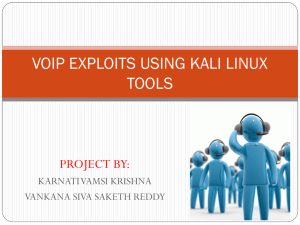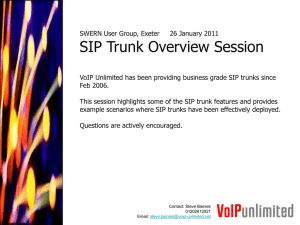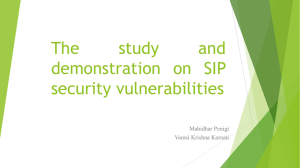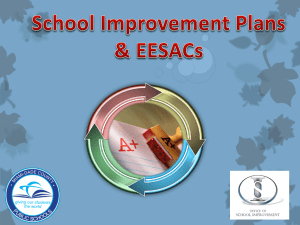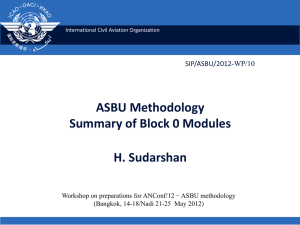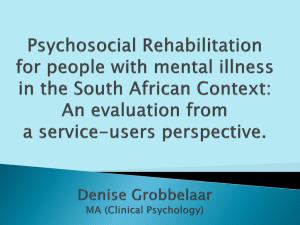ECSECC Powerpoint Template - The Eastern Cape ICT Summit
advertisement
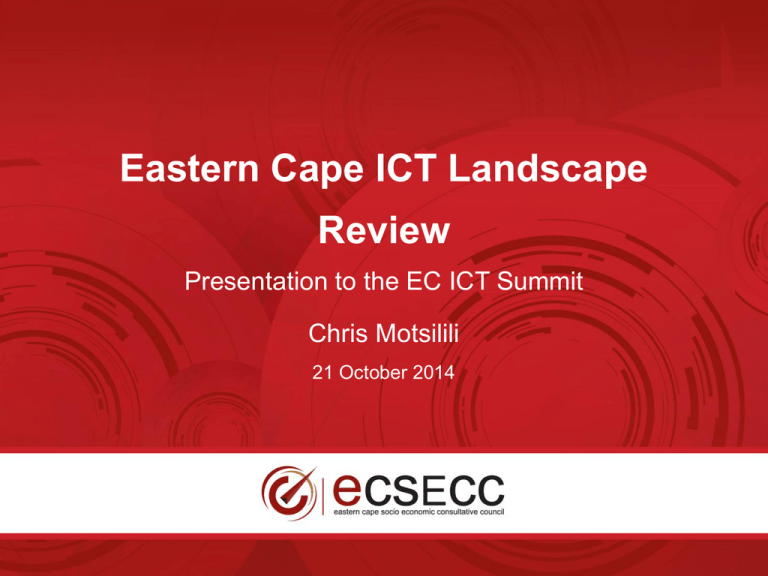
Eastern Cape ICT Landscape Review Presentation to the EC ICT Summit Chris Motsilili 21 October 2014 1 Outline • • • • • ECSECC mandate Contextual overview Purpose of the review Findings Recommendations 2 ECSECC Mandate • Eastern Cape Socio Economic Consultative Council was founded in 1995 as a partnership mechanism between Government, Business & Labour to address underdevelopment and poverty in the Eastern Cape; • NGO sector, Local Government & Higher education sector joined later; • Vision : poverty free EC where everyone benefits equitably from the economy and realises their human potential • Mission: multi-stakeholder centre of excellence in applied policy research, development planning and facilitation; 3 ECSECC mandate (2) • ECSECC was assigned by the Provincial Government to co-ordinate the Eastern Cape interface with the National Infrastructure Plan – Co-ordinate, monitor and report on the SIP’s – Facilitate acceleration and unblocking of strategic projects – Develop strategic propositions to strengthen the case for the inclusion of key Eastern Cape infrastructure projects in the National Infrastructure Plan; – Report strategic issues and challenges to key platforms – Ensure the EC attends to all PICC obligations 4 Strategic Integrated Projects SIPs 1 - 9 SIPs 10 - 18 SIP 1: Unlocking the Northern Mineral Belt with Waterberg as the Catalyst SIP 10: Electricity transmission and distribution for all SIP 2: Durban- Free State– Gauteng Logistics and Industrial Corridor SIP 11: Agri-logistics and rural infrastructure SIP 3: South Eastern node & corridor development SIP 12: Revitalisation of public hospitals and other health facilities SIP 4: Unlocking economic opportunities in the NW Province SIP 13: National school build programme SIP 5: Saldanha-Northern Cape Development Corridor SIP 14: Higher Education infrastructure SIP 6: Integrated Municipal Infrastructure Project SIP 15: Expanding access to communication technology SIP 7: Integrated Urban Space and Public Transport Programme SIP 16: SKA and Meerkat SIP 8: Green energy in support of the South African economy SIP 17: Regional integration for African cooperation and development SIP 9: Electricity generation in support of socioeconomic development SIP 18: Bulk water supply and distribution 5 SIP 15: Expanding access to communication technology – Provide for 100% broadband coverage to all households by 2020 by establishing core Points of Presence (POP’s) in district municipalities, extend new fibre networks across provinces linking districts, establish POP’s and fibre connectivity at local level, and further penetrate the network into deep rural areas. – While the private sector will invest in ICT infrastructure for urban and corporate networks, government will co-invest for township and rural access as well as for e-government, school and health connectivity. – The school rollout focus initially on the 125 Dinaledi (science and maths focussed) schools and 1525 district schools. Part of digital access to all South Africans includes TV migration nationally from analogue to digital broadcasting. 6 Eastern Cape ICT Working Group • Public sector formations: three spheres of government, universities, public entities; • Information sharing, collaboration & networking; • Improve knowledge about ICT initiatives in the Eastern Cape; • Provide policy and strategy advice; • Interface with other stakeholders in an organised way e.g. National Government, private sector, international organisations etc; • Promote the national and Eastern Cape vision w.r.t. information & communication technology 7 Purpose of the review • Improve provincial understanding of the status of ICT initiatives implemented by various public and private institutions; • Ensure that SIP 15 interventions complement the current ICT initiatives in the Province; • Create a basis for selecting priority initiatives for the Eastern Cape; 8 Screen shot of part of the database 60 Interventions at the time of going to press but the number continues to grow 9 Split by beneficiary group Beneficiary Groups 70% 60% 60% 50% 40% 37% All citizens Youth 30% Educators 20% 10% 3% 0% All citizens 10 Youth Educators Split across ICT Strategy Alignment Descriptor SMME development 2% Skills development 3% Service delivery 5% Protection of consumer rights 2% Promoting access 65% Improved service delivery 3% Improved citizen service 3% ICT Literacy 2% Curriculum delivery 5% Business support services 2% Bursary Programme 3% Affordability 0.05 0 11 0.1 0.2 0.3 0.4 0.5 0.6 0.7 STATUS OF CONNECTIVITY IN SCHOOLS 2012/2013 A total of 14, 260 schools were connected in 2012/13, including 10, 065 schools connected for administrative purpose and 4, 195 connected for teaching and learning purposes through the following connectivity initiatives: 2010 FIFA World Cup Legacy project; Vodacom Foundation project; Telkom Foundation project; and CSIR-Meraka Institute projects. Purpose of Connectivity Province Number of Schools Administration Teaching & Learning Eastern Cape 5 588 3136 184 Free State 1 422 581 113 Gauteng 2 015 2 015 1672 KwaZulu-Natal 5 927 110 217 Limpopo 3 965 Mpumalanga 1 838 525 107 597 597 298 North West 1 646 1 646 172 Western Cape 1 455 1 455 1399 Total 24 453 10 065 4 195 Northern Cape 33 Source : DBE. August 2013 12 Source : Department of Basic Education. Summary of NHI Pilot District sites included in the business case Number of sites Site location Health School Government Police Thusong Dr Kenneth Kaunda 38 220 28 15 Gert Sibande 74 519 113 37 9 O.R.Tambo 133 1 204 47 17 Pixley ka Seme 38 96 46 26 Thabo Mofutsanyane 74 480 101 30 3 Umgungundlovu 58 501 122 25 2 Umzinyathi 45 475 61 12 1 Vhembe 120 949 54 20 3 Total for 8 districts 580 4 444 572 182 18 Gauteng Province sites * 630 2 039 399 137 41 Western Cape Province sites * 610 1 464 466 149 32 Total including GTN and WC 1 820 7 947 1 437 468 91 Total national sites 4 558 24 518 3 652 1 122 182 % of total national sites 40% 32% 39% 42% 50% * WCape 13 Prov and GT Prov will connect ALL health centres, of which WCape has 43 NHI sites, and GT Prov has 75 NHI sites. 13 Rural Total 2 1 1 1 2 7 7 160 4% 301 754 1 401 207 689 709 594 1 148 5 803 3 246 2 721 11 770 34 192 34% Percentage of households with access to Internet Source: Stats SA, 2012 14 Other key findings • National departments and other suppliers are defining the ICT needs of the Province, they are also shaping the ICT landscape; • There must be a significant shift toward an ICT space that is driven by the Province and government entities. • There is however a mindset gap between key decision makers and ICT practitioners in public organisations; • The Province needs to move towards a meeting of the minds 15 Other key findings • Through the efforts of the working group, this CSI investment can be redirected such that they support a single vision for the Province. 16 Elements of the horizon Service affordability SUSTAINABILITY Low cost devices Universal service/ac cess Broadband access 17 Digital literacy Analytical framework The illusion of affordability must be addressed. Current affordability has been achieved by ‘subsidising’ the costs for services and access In future, all proposed initiatives will be assessed by means of clear criteria based on the analytical framework 18 Thank you Enkosi Ke a leboha 19

